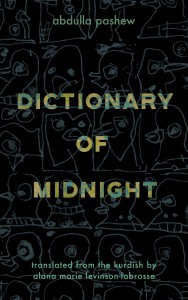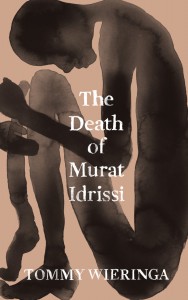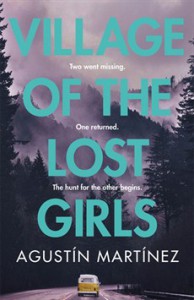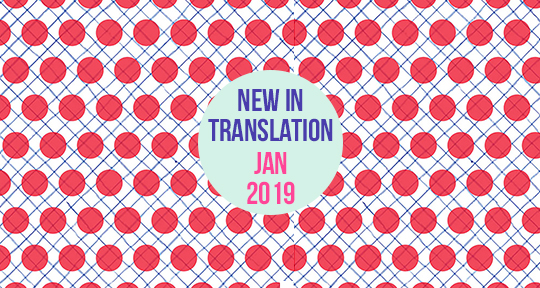Looking for new books to read this year? Look no further with this edition of What’s New in Translation, featuring new releases translated from Kurdish, Dutch, and Spanish. Read on to find out more about Abdulla Pashew’s poems written in exile, Tommy Wieringa’s novel about cross-cultural identities, as well as Agustín Martínez cinematic thriller.

Dictionary of Midnight by Abdulla Pashew, translated from the Kurdish by Alana Marie Levinson-LaBrosse, Phoneme Media (2018)
Review by Jacqueline Leung, Editor-at-Large for Hong Kong
Dictionary of Midnight is a collection of several decades of Abdulla Pashew’s poetry as he recounts the history of Kurdistan and its struggle for independence. Translated from the Kurdish by Alana Marie Levinson-LaBrosse, the work includes a map of contemporary Iraq and a timeline of Kurdish history for those unfamiliar with the plight of the Kurds, something Pashew, one of the most influential Kurdish poets alive today, has taken upon himself to convey and to honor.
In the collection, the Kurdish poems are juxtaposed with their English counterparts. The poems span across the various countries in which they were penned, tracking Pashew’s journey to Soviet Union, North Africa, and Europe, where he still resides. Pashew has, for the purpose of education and exile, spent the majority of his life away from Kurdistan, but his homeland occupies an almost singular focus in his work, often appearing as a landscape of nostalgia, a wishful future, or a bedside lover. The longing and sorrow for a home that cannot be reached is so palpable that it is as if the words have run off the page, like this scene from “A Winter Image,” the poem that has informed the collection’s title: “Tonight, I touched / the dictionary of midnight. / Its words ran from me / like ants.”
To Pashew, poetry is indeed more than just an art form. For many decades, Kurdish was banned; it was only in 2003 that it was reinstated as the official language of the semi-autonomous Kurdish region in Iraq, so writing in Kurdish inevitably takes on a political spectrum. In several poems, Pashew expresses a firm, almost didactic, belief of the role of a poet: “If a word / can’t become a bullet / for the rifle of the freedom fighter . . . then it might as well / become a brush to polish the invader’s boots.” The poet’s duty is to voice what the people cannot put into words, to commemorate—bringing back to mind poetry’s origin in traditional oral recitation—, and to provoke.
Many of the political poems, like “Twelve Lessons for Children,” read like speeches, anaphoric and anthemic, and it is easy to conjure the image of Pashew reciting his poetry onstage to an audience of thousands, for that is the crowd he attracts. Dictionary of Midnight has also taken care to feature many of Pashew’s lyric poems, whereupon the poet speaks in soft, lulling tones to a woman—often the personification of Kurdistan, who is at times in close proximity and impossibly distant. The lover’s body is compared to orchards and mountains as Pashew charts a cartography of exile both public and personal. In “Coup d’Etat,” for instance, the poet compares political action to a destructive love that has “devastated [his] citadel, its walls…and upended all laws,” the damage likened to having only “half the pillow” in bed.
Pashew’s voice carries above all visceral anger, frustration, and sorrow—for his solitude abroad and the intolerable distance of exile; for the promises made to Kurdistan that came undone and the tragedies that fell upon its people, like the Halabja Massacre in 1988. Rage congregates into salient images of violence. “Take up your daggers, stab the sky, drag the sun out! [ . . . ] Destroy the mosques,” Pashew writes in “A Slap in the Face,” against indignation and humiliation. Similarly, moments in ordinary life become commentary for global politics: in an allegorical soccer match between Soviet Union and the US, the ball they play with is a Kurd’s skull; the world watches silently on, tacit and inert amidst calamity.
On “Twelve Lessons for Children,” Pashew once said to Levinson-LaBrosse, his translator, “Could I write such a poem if I had been born or grew up in Paris or Stockholm?” The impact of his poetry is matched only by his suffering; it is precisely because of his misery that his words bear weight. In “A Message,” a poem written during Pashew’s time in Moscow, he writes: “I walk, / in my pocket / a message in a scarlet envelope / beats like my second heart.” The emotions with which Pashew fills his poetry, the letters he posts to his people and the world, shed light on a poet who dwells in loneliness. Dictionary of Midnight shows the lasting haunt of exile, but also the evocative powers of writing as testament to personal strife and a people’s lifelong yearning for home.

The Death of Murat Idrissi by Tommy Wieringa, translated from the Dutch by Sam Garrett, Scribe Publications (2019)
Review by Clayton McKee, Copy Editor
“They were the children of two kingdoms, they carried the green passport of the Royaume du Maroc and the red-lead one of the Kingdom of the Netherlands, but in both countries they were, above all, foreigners.”
Passports and citizenship don’t carry as much importance in constructing identity as the world likes to believe. Despite being a citizen or a dual citizen, it’s possible to feel as if you’re without a country, without a home. Tommy Wieringa explores just that in The Death of Murat Idrissi when two Dutch-Moroccan young women, Thouraya and Ilham, travel for the first time from their home, the Netherlands, to their family’s “native land” in Morocco. Not only do the two girls find new respect and privilege for life, but the reader, by identifying with the two, finds a new understanding of immigrants and the need to do dangerous things in order to find safety. Most trips break down barriers and provide insight into other peoples’ lives and ways of thinking, but this trip of self-discovery provides a macabre twist when the two girls pop the trunk of their car to find Murat Idrissi’s bloody hand emerging from the spare tire well. On this chilling adventure in the summer heat of Morocco and Spain, Thouraya and Ilham discover that their perseverance and strength trump race and nationality as the basis of their identities.
Thouraya and Ilham grew up exclusively in the Netherlands, speaking only Dutch and a little bit of French. Going to Morocco was supposed to be a fun, carefree trip which would allow them to get in touch with their roots and feel like they were part of something since in the Netherlands, they were always considered Arabs or immigrants due to their race. Instead, they are taken advantage of by their so-called “fellow countrymen” and witness a great divide between the wealthy and poor as well as the lack of women’s rights in Europe. They get roped into smuggling Murat Idrissi across the border from Tangier to Spain after witnessing the poverty and hopelessness of his family. Saleh, a friend they met on the trip, was supposed to check on him during the boat ride across the Strait of Gibraltar; however, he evidently forgot, which the girls discover when they open the trunk of the car just before going through customs. Ditched by Saleh, who has all of the money, and his friends, Thouraya and Ilham try to drive north from the southern tip of Spain in the blazing summer heat with a corpse in the back of their car.
Before delving fully into this narrative, Wieringa provides a historical introduction to the Strait of Gibraltar and the difficulties faced throughout the ages while traversing or even passing through to the Atlantic or the Mediterranean. After historicizing the European influence and exploration throughout the area, he switches to the countless immigrants who attempt to cross the treacherous fourteen kilometers between Morocco and Spain, oftentimes meeting their demise. Just like Thouraya and Ilham, readers are meant to realize the comfort and security in which they live while being forced to think about the situation from which these immigrants are fleeing. Just like the two young women, the reader has difficulty identifying with the extreme poverty and hunger that forces people to flee; however, as the two are faced with the possibility of legal persecution and an upheaval of their own lives, the reader, understanding Thouraya’s and Ilham’s dilemma, might also finally able to understand the “other” that fills the news and seems so far removed.
Due to the complex identities and diverse countries spanned throughout the work, Wieringa includes multiple languages in the text beyond the Dutch. Garrett adeptly maintains that linguistic difference throughout the text, translating the Dutch into a fluid English prose and including French, transliterated Arabic, and Spanish. The sentences are concise, propelling the action along and keeping readers on the edge of their seats to find out what will happen with the body. The work maintains this ambiguity until the very last chapter, but I won’t spoil it for you! While Thouraya and Ilham don’t feel like they belong anywhere, Garrett’s translation appears exactly like an original in English despite its status of “Dutch-immigrant.” Garrett captures the desperation and emotion that accompanies immigration, imbued in the original by Wieringa. Additionally, Wieringa’s impactful message reflects current events taking place on the borders of the Anglophone world, making it a vital must-read.

Village of the Lost Girls by Agustín Martínez, translated from the Spanish by Frank Wynne, Quercus Books (2019)
Review by Lara Norgaard, Editor-at-Large for Brazil
If you are looking for a quick, fun read this winter, Spanish screenwriter Agustín Martínez’s new novel in translation, a nail-biting thriller set in the heart of the Pyrenees, might just be for you. Rendered in English by Frank Wynne, Village of the Lost Girls follows the investigation into a kidnapping of two young girls in a small village called Monteperdido. Its plot moves full throttle in the opening pages when one of the girls reappears after five years in captivity, and the ensuing action carries with it all the trimmings of the hard-boiled genre. The twist and turns in the search for the second lost girl certainly make the novel hard to put down—but readers may also find that Village of the Lost Girls lacks original figurative language and fully rounded female characters.
Though many contemporary authors play with the well-trodden conventions of the traditional detective novel, Agustín Martínez’s Village of the Lost Girls fits into the thriller genre almost perfectly. Martínez exchanges the typically urban backdrop to one of an isolated rural village where a criminal underground is still hyper-present. From tight-knit hunting associations to active child pornography networks, crime coats Monteperdido. The detectives must traverse these darker sides of society, drawing a series of mirrored doubles between police and criminal. A central protagonist and lead detective on the case, Sara shoots a fellow detective’s dog at the beginning of the book, and her trigger-ready finger leads to interesting parallels at other climactic moments in the plot. The strongest literary dimensions of the work lie in the doubled characters that multiply in parallels and juxtapositions to consume almost every figure in the novel—the two kidnapped girls and their families, the detectives themselves, and even the guilty party, once discovered. Martínez constructs a complex web of mirrored, echoed relationships, making for a complex investigation and interesting echoes in the traditional detective binaries of guilty/innocent, good/evil.
Thrillers are also a very cinematic genre, which makes Martínez’s experience as a screenwriter a strength. Descriptions of shoot-outs, car chases, and moments of escape or violence—essentially, the most suspenseful action-filled sections of text—are vivid and compelling. The more figurative moments of the text are, by contrast, often dissatisfying. When the found girl’s mother sees her child for the first time in five years, the narration reads: “She was afraid that, if she reached out, she might break the spell and her daughter would vanish . . . ” Not only is the English phrase “break the spell” a cliché, but the larger sentiment feels pre-packaged. The examples continue: Sara thinks one particularly mysterious character might “disappear in a puff of smoke”; after the death of a close friend, one character reflects in a fairly unoriginal manner: “She wanted to see bare branches, life buried under a mantle of snow”; we see similar flat moments of despair during a car chase: “For a split second, she hoped that it would never stop . . . A clean fall into the void.” The few meta-textual moments are heavy-handed: “Victor went off to shower, thinking about how Nicolás had already transformed him and Sara into characters in one of his crime novels.” The composite result of language in Village of the Lost Girls, in Wynne’s English word choice and in the original text, is an un-interesting and repetitive reflection on death and loss.
Perhaps one could argue that Martínez’s project in Village of the Lost Girls centers more on plot than literary language. Though it might frustrate readers looking for deep themes, the action may still satisfy many avid readers of the detective genre. However, what is deeply troubling about the novel is how it blithely follows a sexist path. While countless men in the book are lone wolves, no major female character exists independently from men. Protagonist Sara is emotionally volatile and dependent on a more stable father figure. The kidnapped girl Ana quickly dives into a budding romance while processing her trauma. The mothers of the two missing girls are each wrapped up in turbulent relationships with men. Only one strange, witch-like old woman is truly independent; the sex lives of all the other women are central to their characters, except for Sara, who has no romantic life at all. It is no coincidence that the one asexual figure occupies the traditional male detective role. The worst example of sexism in Martínez’s thriller, though, is the stereotyped femme fatale, Elisa. Her role as the seductress is especially egregious because she is an adolescent girl who makes false rape claims to the authorities as revenge after failing to sleep with her male teacher. Her exclamation—“I’ll tell them you’re a pervert—I’ll say you raped me!”—exemplifies the unimpressive and problematic male writer’s perspective on a young girl’s relationship to sexuality and power. Ultimately, there are three kinds of women in Village of the Lost Girls: the cerebral asexual, the innocent victim of male desire, and the undesirable hypersexual figure. In a moment of global reckoning about sexual assault, it is disappointing that Martínez let his prose fit so cleanly into damaging sexist tropes.
Village of the Lost Girls is a hard-boiled page-turner in the most traditional sense. Its rapid plot twists and the intricacy of the mystery drive the book forward, but readers who pull this tome off the shelf must be willing to look past stale language and a sadly out of touch male perspective to reach the final whodunit.
*****
Read more reviews on the Asymptote blog:

